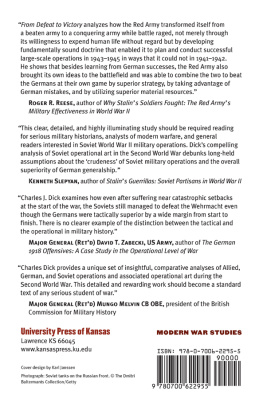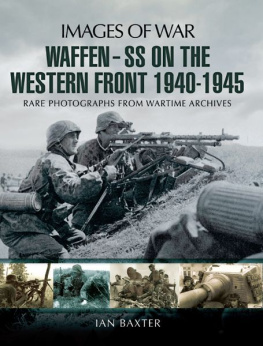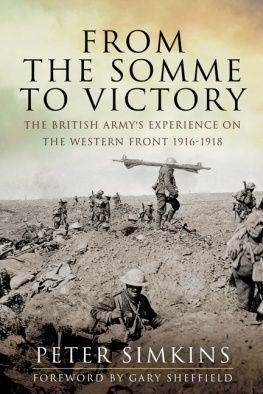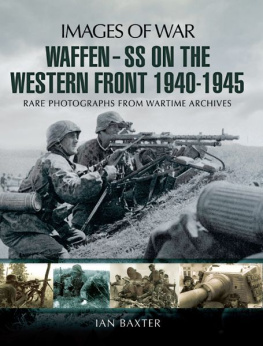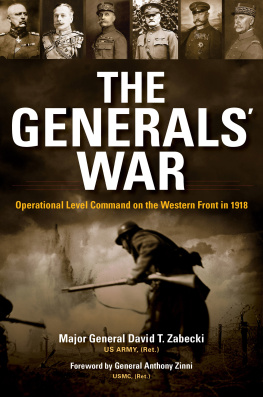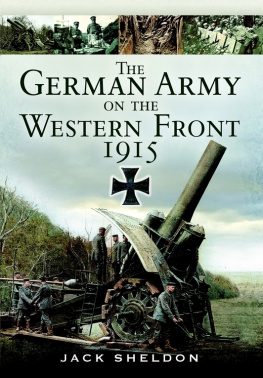Contents
From Victory to Stalemate
MODERN WAR STUDIES
Theodore A. Wilson
General Editor
Raymond A. Callahan
Jacob W. Kipp
Allan R. Millett
Carol Reardon
Dennis Showalter
David R. Stone
James H. Willbanks
Series Editors
Decisive and Indecisive
Military Operations, Volume 1
From Victory to Stalemate
THE WESTERN FRONT,
SUMMER 1944
C. J. Dick
Foreword by David M. Glantz

2016 by the University Press of Kansas
All rights reserved
Published by the University Press of Kansas (Lawrence, Kansas 66045), which was organized by the Kansas Board of Regents and is operated and funded by Emporia State University, Fort Hays State University, Kansas State University, Pittsburg State University, the University of Kansas, and Wichita State University
Library of Congress Cataloging-in-Publication Data
Names: Dick, Charles, author.
Title: From victory to stalemate : the western front, summer 1944 / C. J. Dick ; foreword by David M. Glantz.
Description: Lawrence, KS : University Press of Kansas, [2016] | Series: Modern war studies.
Decisive and indecisive military operations ; volume 1
Includes bibliographical references and index.
Identifiers: LCCN 2016023608
ISBN 9780700622931 (cloth : alk. paper)
ISBN 9780700622948 (ebook)
Subjects: LCSH: World War, 19391945CampaignsWestern Front. | Operational art (Military science)History20th century.
Classification: LCC D756 .D528 2016 | DDC 940.54/21dc23
LC record available at https://lccn.loc.gov/2016023608.
British Library Cataloguing-in-Publication Data is available.
Printed in the United States of America
10 9 8 7 6 5 4 3 2 1
The paper used in this publication is recycled and contains 30 percent postconsumer waste. It is acid free and meets the minimum requirements of the American National Standard for Permanence of Paper for Printed Library Materials Z39.48-1992.
Contents
Maps
Foreword
C. J. Dicks two-volume study is a comparative critique of the differing approaches employed by the Allied powers as they conducted military operations in western and eastern Europe against the Wehrmacht of Hitlers Germany during the summer of 1944. Its uniqueness rests in its comparative nature. Rather than detailing the course of military operations, emphasizing battles and leaders as so many previous books have done, Dick analyzes and compares Allied approaches to conducting war strategically and, more importantly, operationally. As he states in his introduction, My purpose is to put forward broad arguments about the conduct of war at the operational levelthe handling of armies and army groups by both the Western Allies and the Red Army in contemporaneous campaigns. This he accomplishes objectively, sometimes caustically, but always thoroughly, with the jewelers eye of a professional army officer and a skilled student of military history and with the analytical tools of an accomplished military theorist.
Dicks background has uniquely equipped him to do what other military historians have been unable to achieve. His experiences as an airborne and later intelligence officer in the British army, as an accomplished teacher of military history, and as the organizer of countless staff rides to the battlefields of Europe in the service of the British army and NATOs Allied Rapid Reaction Corps provided him with fresh perspectives regarding Allied operations in France during the last two years of the war. Likewise, as a member and then director of the renowned Soviet (later Conflict) Studies Research Centre during and after the Cold War, he possesses keen insights into how and why the Red (Soviet) Army prepared for and conducted war as it did. Accordingly, this two-volume study exploits these experiences in support of its distinctive comparative approach.
Titled From Victory to Stalemate, the first volume of this study focuses on why and how the Western Alliesspecifically, the United States, Great Britain, and Canadaconducted military operations in France from July through September 1944. Although Dick touches on the difficult task of forming and managing a strategic coalition, his emphasis here is on how the imperatives of coalition warfare affected the nature of subsequent operations or, more specifically, impeded the development of so-called operational artthat is, the ability to perform sequential operational tasks necessary for the timely achievement of strategic aims. Thus, as this volume points out, victory in the breakout from Normandy in August 1944 ended with stalemate in the fall of 1944.
The chapters in volume 1 unfold chronologically, from the prelude of the dramatic but costly establishment of the Normandy lodgment, through the painstaking fighting in the hedgerows around St. L, the euphoric breakout eastward in Operation Cobra, and the frustrated hopes of the dash to Paris, and, ultimately, to the burgeoning stalemate on the approaches to the Rhine in late September. In the end, Dick ponders what all this meant, especially the impact of coalition warfare (as well as national military traditions) on the strategies and operational concepts employed and their positive or deleterious effects on the ability of coalition armies to operate effectively enough to achieve their strategic aims. He understands the truth in this statement: Tactics makes the steps from which operational leaps are assembled; strategy points out the path. This volume serves as a warning and an exercise in the management of expectations for those countries and their leaders contemplating the conduct of coalition warfare in the future.
David M. Glantz
Carlisle, PA
Acknowledgments
I found writing this book much more difficult than I had expected when I blithely embarked upon the project. There were many times when I stared glumly at my computer, bereft of ideas, or gazed at the little birds industriously building their nests in my garden fence and wished I too could be out in the sun, indeed, anywhere except at my desk. That the project came to fruition is due in significant part to my beloved wife, Heather. She tolerated my spells of irritability or abstraction, demonstrating extraordinary forbearance in the face of periodic neglect. She encouraged me when I seemed despondent and disinclined to work, offering helpful suggestions to make some passages read more mellifluously. But her finest hour came with the proofreading. Her patience, attention to detail, and constructive ideas have combined to make this study more readable and accurate than it would have been if it had been left to me.
The ideas and opinions contained in this work owe much to my reading but more to innumerable discussions over the course of staff rides and battlefield tours, in the wake of lectures, or over a glass of wine or beer. I cannot begin to list all those who, during thirty or so years of study, made a contribution. I can, however, single out for special thanks the five people who read my drafts, made suggestions, and gave me insights. I worked with and came to know each of them when I was with the Soviet (later, Conflict) Studies Research Centre. All are deeply knowledgeable about military history and, critical for my purposes, about the central theme of my studyoperational art. Four were soldiers who thought deeply about their profession and spent much of their careers, whether during their military service or after, educating officers in staff colleges and through their writings. In Britain, they are Major Generals Mungo Melvin and John Sutherell. In the United States, they are Colonels David Glantz and Les Grau, both soldiers turned academics. My lone civilian, Professor Jake Kipp, has spent a distinguished career in academe, much of it with David and Les, studying and writing about the same themes. I owe David a double debt. He provided me with indispensable material from his unparalleled collection of Soviet articles and General Staff documents.


